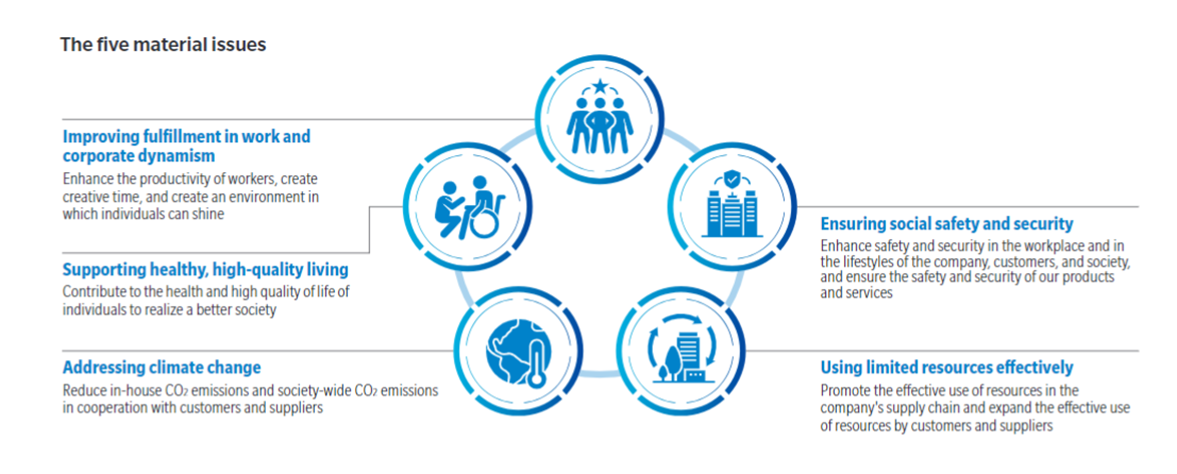Our future vision: Takuya Nishimura on using limited resources effectively
We’re proud to have been innovating for the good of society for 150 years, working tirelessly to achieve our vision of “Imaging to the People”. Konica Minolta has identified five themes that will create added value and solve predicted social and environmental issues between now and 2030. As we look to the future, we’re guided by these five material issues.

We spoke to Takuya Nishimura, Senior Vice President,
Specim, Spectral Imaging Oy Ltd. – technology that allows us to measure the invisible range. He talked to us about how the business is addressing one of the five material issues that underpins our goals: using limited resources effectively.
We discussed making the invisible visible, and how Konica Minolta’s sensing technology is helping organisations achieve more – using less.
"For example, in the recycling industry, with SPECIM technology, customers can optically and automatically sort black plastics by material and turn black plastic waste to recycled product. No need to burn it and to generate pollution."
Takuya Nishimura, Senior Vice President, Specim, Spectral Imaging Oy Ltd.
What’s the most interesting part of your job?
Takuya Nishimura: Hyperspectral imaging (HSI) is a high-performance technology that allows users to capture wavelengths that are both visible and invisible to the human eye across the light spectrum. Hyperspectral imaging is relatively new technology and has a lot of potential. We can contribute to reduce plastic waste, food waste, to find foreign objects in food production line, plant diseases etc. The new applications are coming in and we are contributing to society, customers and company.
How do you support Konica Minolta's vision and purpose?
Takuya Nishimura: I believe I can contribute to realising “Imaging to the People” by growing SPECIM and HSI business and by strengthening business portfolio of SPECIM. We will work even closer to customers and we will be brave enough to keep growing and changing with society and customers. Going beyond what we are, and what customers are seeing. Our business portfolio will be expanded to invisible ranges. By doing that, we will tackle the five material issues Konica Minolta identified.
What does “Imaging to the People” mean to you?
Takuya Nishimura: To be a partner for customers and find the solution to issues customers were not aware of.
How do you achieve “Imaging to the People” in your job?
Takuya Nishimura: SPECIM’s mission and Konica Minolta’s vision are linked deeply. Growing the SPECIM business and strengthening the business portfolio in SPECIM, will lead us to contribute to “Imaging to the People”.
Thinking of the material issues, how does your team help the effective use of resources?
Takuya Nishimura: SPECIM and Konica Minolta can contribute using limited resources effectively by providing our technology to recycle food, agriculture, geology and the mining industry etc. For example, in the recycling industry, with SPECIM technology, customers can optically and automatically sort black plastics by material and turn black plastic waste to recycled product. No need to burn it and to generate pollution. It means good to us and society. In addition, good for customers to use less money and time.
Why is using limited resources effectively important?
Takuya Nishimura: Climate change and environmental pollutions are the challenges for all human beings. It is highly crucial to tackle the challenges for our life, not only human beings, but also for whole life forms in the earth. I'm honoured to be a part of this initiative under the Konica Minolta Group.
What excites you most about the future?
Takuya Nishimura: Hyperspectral imaging’s future potential. Hyperspectral is a part of the value chain to tackle customers’ and society’s issues in various industries.
How can Konica Minolta impact the future?
Takuya Nishimura: Solution provider to social issues. We can contribute to, maintain or improve the earth as our globe mark.
Hearing from Takuya Nishimura, it’s clear how committed Konica Minolta is to unlocking the potential of sensing to help organisations use limited resources more effectively. It’s evident that this is just the beginning and by exploring how more industries can harness the power of making the invisible visible in the future, we can continue to drive environmental impact in ever more positive ways.
